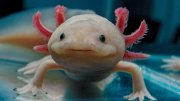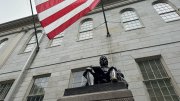Climate change will make invasive plants even more dominant in the landscape, a study by a team of researchers including three Harvard scientists has found.
Published in the online journal PLoS One, their paper is the first demonstration that climate change likely plays a direct role in promoting non-native species' success, according to a press release from Harvard's Faculty of Arts and Sciences. "Climate change will lead to an as-yet unknown shuffling of species, and it appears that invasive species will become more dominant," Charles C. Davis (one of the researchers, and an assistant professor in Harvard's department of organismic and evolutionary biology) said in the press release.
The study used a dataset that began with Henry David Thoreau's cataloging of plants around Walden Pond in the 1850s, when the author and naturalist kept meticulous notes documenting natural history, plant species occurrences, and flowering times. Since then, the mean annual temperature around Concord, Massachusetts, has increased by 2.4 degrees Celsius, or 4.3 degrees Fahrenheit, causing some plants to shift their flowering time by as much as three weeks in response to ever-earlier spring thaws.
The researchers’ current work finds that non-native plants, and especially invasive species, thrive during times of climate change because they're better able to adjust the timing of annual activities like flowering and fruiting. It builds upon a 2008 paper by Davis and colleagues which reported that some 27 percent of all species Thoreau recorded from 1851 to 1858 at Walden Woods are now locally extinct, and another 36 percent are so sparse that extinction may be imminent.
"Invasive species can be intensely destructive to biodiversity, ecosystem function, agriculture, and human health," said Davis, whose coauthors included Charles G. Willis of Harvard and Duke University, Brad R. Ruhfel and Jonathan B. Losos of Harvard, Richard B. Primack of Boston University, and Abraham J. Miller-Rushing of the USA National Phenology Network and the Wildlife Society. "In the United States alone, the estimated annual cost of invasive species exceeds $120 billion. Our results could help in developing predictive models to assess the threat of future invasive species, which may become greatly exacerbated in the face of continued climate change."
For a related article, see Harvard Magazine's 2006 alumni profile of Gilbert Gale ’69, who details the cascade of ecosystem effects of invasive plants on native plants, fish, and even large mammals in wilderness areas and rangeland in the American West as part of his job with the U.S. Forest Service.







